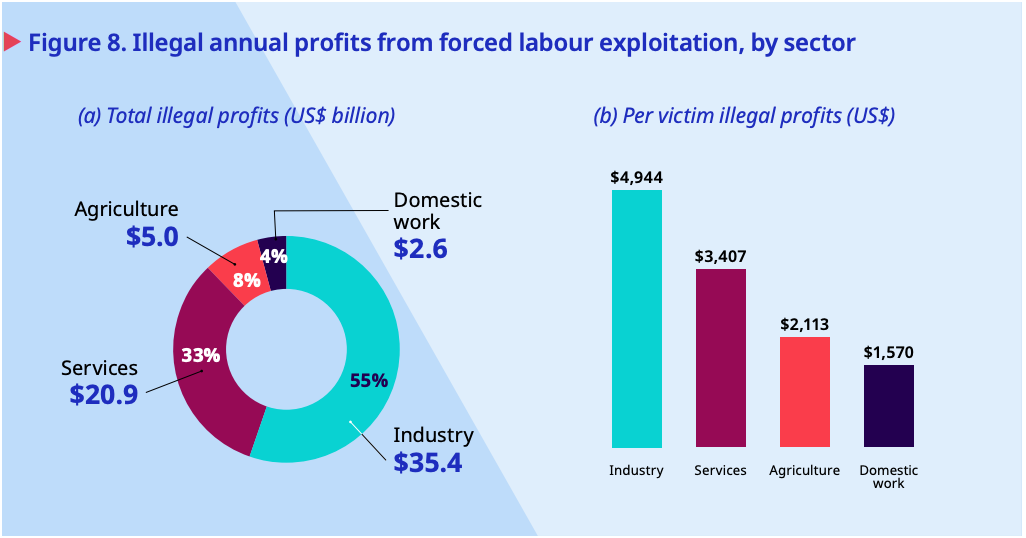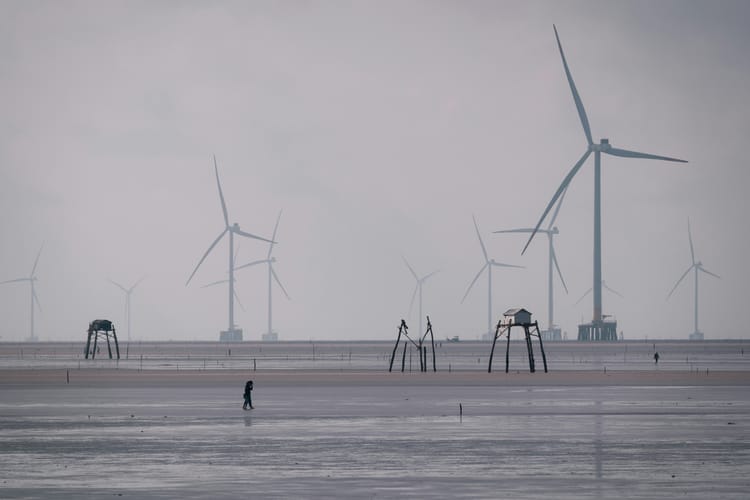‘Obscene’ profits from forced labour are on the rise

Forced labour generated US$236 billion of profits for the private sector in 2023, an “obscene number” that rose 37% since 2014, according to the International Labour Organisation (ILO).
While the wide majority of profits from forced labour come from commercial sexual exploitation, companies in industrial sectors, agriculture and services are not immune to this practice in their supply chains.
Industry, including mining and quarrying, manufacturing, construction and utilities, is the second sector with the highest such illegal profits at US$35 billion, followed by services such as wholesale, trade, accommodation and foodservice, entertainment and education but also transport and storage (US$20.8 billion), agriculture including fishing (US$5.0 billion), and domestic work (US$2.6 billion).

Read also: Supply chain sustainability and social impacts - more integration needed
EU legislation targeting forced labour
Several of these sectors were initially considered “high risk” by the Corporate Sustainability Due Diligence Directive, which makes EU companies bear legal responsibility for environmental human rights breaches in their supply chains. In the first draft of the legislation, lower employee and turnover thresholds were applied to firms in these sectors to ensure greater scrutiny, but this approach was abandoned in the final draft, which is currently on its way to approval in the European Parliament.
Earlier this month, the EU also reached a provisional agreement on new rules to ban products made with forced labour in their supply chains from being sold in Europe. The new regulation would create a framework for enforcing this ban, including through investigations, new IT solutions and cooperation with other authorities and countries, particularly for high-risk goods and areas.
The European Parliament and Council are now expected to give the final green light to the ban, after which EU countries will have three years to apply the new rules.
27.6 million people currently forced into labour
Overall, 27.6 million people are currently forced into labour around the world, including 6.3 million in industry, 5.5 million in services and 2.1 million in agriculture. One quarter of these people are children.
Asia and the Pacific is host to more than half of the global total of people in situations of forced labour (15.1 million), followed by Europe and Central Asia (4.1 million), Africa (3.8 million), the Americas (3.6 million), and the Arab States (0.9 million).
“People in forced labour are subject to multiple forms of coercion, the deliberate and systematic withholding of wages being amongst the most common. Forced labour perpetuates cycles of poverty and exploitation and strikes at the heart of human dignity. We now know that the situation has only got worse. The international community must urgently come together to take action to end this injustice, safeguard workers' rights, and uphold the principles of fairness and equality for all,” said ILO Director-General, Gilbert F. Houngbo.







Member discussion